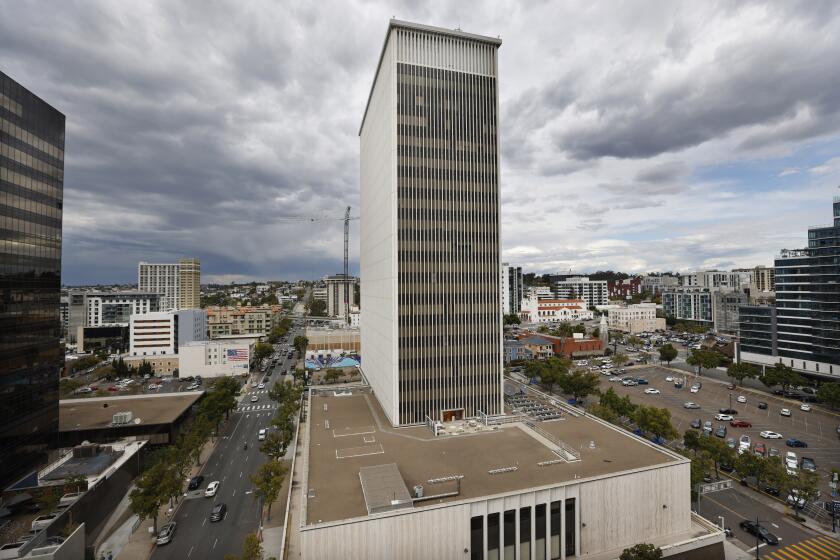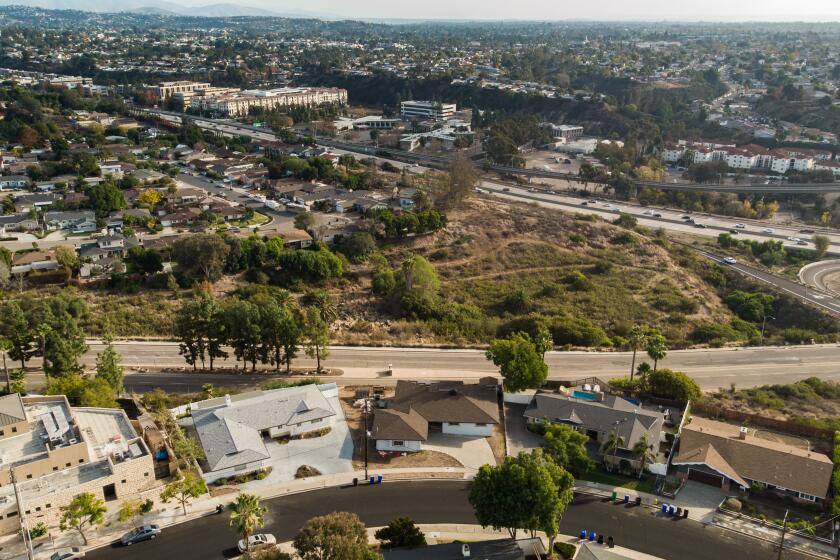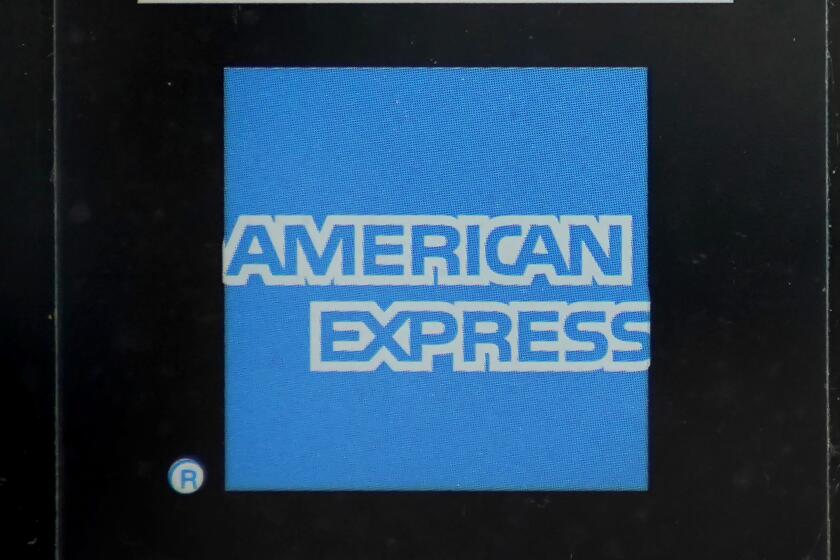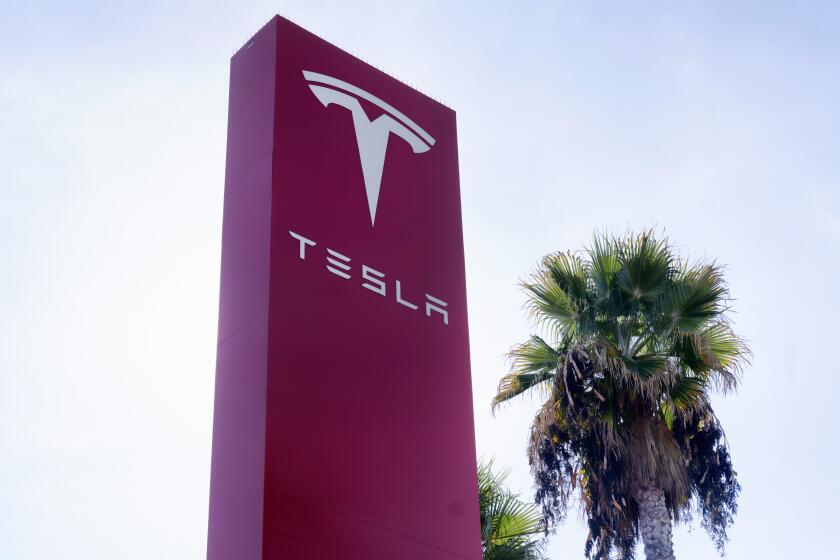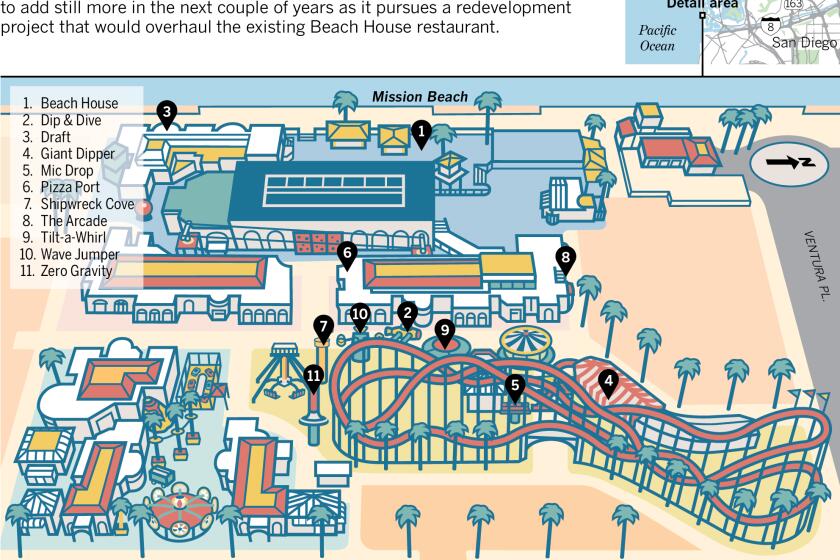Instacart expands grocery delivery service to San Diego
Beginning Tuesday, San Diegans will have a new way to stock up on food and beverages from some of their favorite specialty grocers, including Jimbo’s and Whole Foods.
Instead of making a physical trip to the store, centrally located residents can now pick up the Instacart mobile app, tap a few buttons and outsource their grocery chores to someone else. In San Diego, Instacart will start its grocery delivery service with on-demand and scheduled delivery to patrons in downtown and surrounding neighborhoods, with coverage extending to parts of Mission Valley.

Instacart expands grocery delivery to San Diego
“We’re going to start in the pretty concentrated area of downtown, where we’ll be able to serve nearly 400,000 residents by our estimate,” said Sean Twersky, Instacart general manager for the Southern California region. “Our goal is to first start small and make sure everything is running tightly.”
Founded in San Francisco in 2012, the company currently operates in 24 U.S. cities. It was valued at $2 billion after raising $220 million in January of last year.
Already popular in dense, parking-challenged metros such as Los Angeles and New York, Instacart follows the gig-economy model made famous by Uber where independent contractors, and not employees, are matched with customers to make grocery pickups and drop-offs. “Shoppers,” as Instacart calls its workers, earn a set fee for every order they accept, as well as a commission on a per-item basis. The company declined to disclose pay rates for San Diego workers but said its most efficient shoppers could make between $20 and $28 per hour.
Meanwhile, patrons, who place their orders through the Instacart smartphone app or website, pick a retailer and add items to a virtual shopping cart. They can also leave notes for the shopper and specify a replacement if a desired product is out of stock.
Users choose between an annual convenience fee of $150, or a per-delivery rate of $6 for orders over $35 and $8 for purchases less than $35. Customers can choose from immediate, one-hour delivery or schedule a same-day delivery at the time of their choosing. Instacart even offers future delivery up to seven days in advance. In times of high demand, users may need to pay what’s called “surge pricing” to secure a popular delivery window.
In addition to fees, the company makes money by partnering with merchants who are charged a negotiated rate based on sales. In San Diego, current partner merchants are Jimbo’s Naturally, Whole Foods, Smart & Final, Costco (no membership required), Ralph’s and Petco, though Instacart plans to expand that list in the near future.
“Our margins are less than if the customer shops in the store, but we hope this increases overall sales and the bottom line,” said Jim “Jimbo” Someck, owner of the San Diego natural foods chain, Jimbo’s Naturally.
At launch, Instacart’s limited neighborhood availability may make it difficult for the area newcomer to go head-to-head with Amazon Fresh, the e-commerce giant’s more widely accessible same-day grocery delivery offering. Fresh, however, is a relatively pricey perk offered only to Prime members, who must pay an additional $200 per year on top of the standard $99 annual Prime fee.
Alternatively, Prime members in select parts of the county can turn to Amazon’s Prime Now mobile application for free two-hour delivery from Sprouts, though that store’s product catalog is limited through the app.
Jimbo’s, meanwhile, will offer roughly 95 percent of its products, alcohol included, to Instacart customers. And all prices will always be the same as in-store prices, Someck said.
“If anything goes on sale, Instacart users will get the sale price,” the Jimbo’s owner added.
Still, Instacart is picking a grocery delivery fight with a mightier foe that has historically shown a desire to gain market domination over immediate profits. Amazon is also currently hiring for several Fresh engineering positions in the San Diego region and has held at least one recruiting event, hinting at the company’s designs to expand that business.
“We compete with Amazon Fresh in a number of our markets,” Twersky said. “We do provide a slightly different service ... with us, you can try it once and see if you like it, and just buy it when you need it.”
Instacart customers also get speedier delivery options and can shop from specific, name-brand merchants, he added. And, when it comes to produce, an often difficult-to-deliver food category, the startup guarantees satisfaction. So users can decline to accept sub-par fruit or vegetables before or after delivery and receive a refund for those items.
Perhaps the guarantee and added conveniences will help Instacart keep new customers coming back for repeat orders and shake off any stigma associated with Webvan, the original grocery delivery startup that infamously flamed out in 2001.
“There have been many people, from folks I meet on the street to people in Silicon Valley, who have said, ‘There’s no way you can ever make money on this,’” Twersky said. “They’re wrong. Actually, yes, you can. We’ve proved it and we’re going to keep proving it.”
Get U-T Business in your inbox on Mondays
Get ready for your week with the week’s top business stories from San Diego and California, in your inbox Monday mornings.
You may occasionally receive promotional content from the San Diego Union-Tribune.


